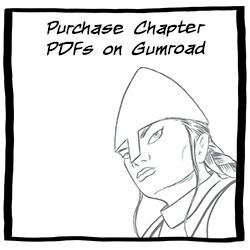How to Fight: Part 3
There are several additions we added to combat over the course of the game. These additions are Combat Maneuvers, Armour Value, Unarmed Combat Rules and Weapon Mastery. Combat Maneuvers are the things that all combatants are able to perform in combat, but these rules are included for the standardization of their effects so there is no argument. The unarmed rules are added because of the player who played Napoleon. He just insisted on punching and kicking and wrestling his way through combat and we needed a way to implement just how powerful he was becoming. The BECMI rules are clunky and strange, and deserve to be streamlined but they are presented here as-is. As this page gets developed and I alter the rules my comic uses, I will update the rules on this page. Third, was Armor Value. We also played Palladium Games back in the day. Those rules had Hit Points and SDC (Structural Damage Capacity) and took some of the abstract out of the hit point system, where Hit points was your guts and your health, and SDC was literally a ranking of your toughness. So when we read the Armor Value rules it clicked and we started utilizing them. It made area of effect spells really deadly and gear maintenance a crunchy sort of thing, but that was something that we were into, so we stuck with it. And the last system was Weapon Mastery. This SERIOUSLY changes the game. Characters of high mastery are extremely dangerous. But the effect it had on the game was interesting. Players sought out to determine how skilled their opponent was, and if they were supposed to be a master, sought to ambush or attack from range distance rather then engage in melee. And the powerful melee characters were always trying to find ways to sneak or surprise to get into melee range. Master bowmen were extremely dangerous all around, especially if they just stand still and shoot with their attack of opportunity as well. This made our players actually use Thieving and backstabbing trying to eliminate those threats. The point I guess I am making is that at least for our game it increased the tactical nature of our combats, and therefore made it more fun. Now the rules for Weapon Mastery are extensive and weapon specific so their addition on this page is going to come in bursts as I have time to enter it.
Combat Maneuvers
Fighting in D&D is an abstraction. Each round is approximately 10 seconds, and within that time there’s a lot that is going on. The character has a few options, some of which has already been defined. Attack, Move, Cast a Spell, ‘try something’, and so on. Now we are adding more combat maneuvers to the list of things that can be declared in a round and add tactical options to combat to make fighting more tactical and interesting, especially when dealing with warriors that have Mastery in their weapons and you need to use every advantage you get.
The following combat maneuvers have already been detailed: Fire a Missile Weapon, Attack with a Melee Weapon, Move, Opportunity Fire, Cast a Spell. The complete list of Combat maneuvers are on this page.
Weapon Mastery
In the Master’s Box Set they introduced a HUGE set of rules where you can keep dumping proficiencies into the same weapon to get better at it. This went way beyond the weapon specialization rules of AD&D, each weapon had a Basic, Skilled, Expert, Master, and Grand Master, with a SIGNIFICANT improvement in the to hit rolls and the amount of damage applied by the weapon. For example, a long sword in the hands of a 1st level Novice fighter does a 1d8 damage, but that very same weapon picked up by the lowest level Grand Master possible at 15th level would do 2d8+8 dmg with two attacks per round and lower the Grand Master’s AC by 4, have +8 to hit on top the level THACO and ability bonuses. That is an INSANE power difference. Granted the grand masters are supposed to rare creatures of extreme skill, but it’s it’s enough to make sure you shoot at that dude with crossbows from 50 yards away and NEVER get within range of his blade. We used the rules for all of it’s OP nature and having Gnoll chieftains that were Experts with the flail made for very interesting and Dynamic boss battles (once you got used to the math), and the extra damage matches Armour Value rules fairly well. I grouped weapons into similar categories, if you have weapon mastery in one of the weapons in each group, you have weapon mastery at one level lower for all of the rest of the weapons in that same category. The reasoning there is, for example, a club, mace, and morning star have similar implementations to bonk your opponent. The weapon mastery tables on a per weapon basis are here.
Weapon Mastery Weapon Categories
Axes
Battle Axe
Hand Axe
Bows
Short Bow
Long Bow
Crossbows
Light Crossbow
Heavy Crossbow
Clubs
Blackjack
Club
War Hammer
Mace
Two Handed pole weapons
Staff
Spear
Halberd
PoleAxe
Trident
Pike
Lance
Swords
Short Sword
Normal Sword
Bastard Sword
Two Handed Swords
Two Handed Sword
Bastard Sword
Armor Value Rules
Armor Class is now specifically defined as your ability to not be hit. Armor you are wearing will absorb damage if you are hit. The only things that effect your Armor Class are Dexterity bonuses, shield bonuses, and magical modifiers. The armor you are wearing will absorb hit point damage and reduce overall damage taken by the one attacked to a minimum of one hit point per successful attack but doesn’t not contribute to your overall armor class. (Armor Class should be renamed to something like Hit Avoidance for this rule set, but I digress.) The first chart is for shields. The the bigger the shield, the harder you are to be hit.
| Shield | AC | Cost | Enc | HP |
|---|---|---|---|---|
| Small | -1 | 5 | 50 | 30 |
| Medium | -2 | 10 | 100 | 60 |
| Large | -3 | 15 | 200 | 100 |
| Tower | -4 | 25 | 300 | 180 |
The AC value is the amount your AC is reduced by
Cost is the cost in gold pieces
Enc is the encumbrance of the shield in coins
HP is the amount of hit point damage the shield can take.
The HP value of the shield only comes into play if the Shield Parry Combat Maneuver comes into play. If a combatant decides to use the shield beyond the normal use for parrying and attacking and chooses to hide completely behind the shield blocking all attacks, if successful, all damage that would have been taken by the character is then applied to the shield. If HP is reduced to 0, the shield is destroyed. If HP is at 50% then the AC bonus is halved, rounded up. The shield takes no damage through normal fighting.
The next chart is for Armor. The more you wear, the more you are protected, but the harder it is to move in it. The heavier the suit of armor is, the less Dexterity bonuses can be applied by the wearer. The Dexterity score is not fundamentally effected and Dexterity checks are rolled as normal, but the defense bonuses for the highest levels of dexterity and the heaviest suits of armor are restricted. The reasoning is, the more steel you wear, the harder it is to dodge, and the techniques of fighting rely on the protection you are wearing and not the dodging of attacks. There are much more extensive lists for the types of armor that can be used in the game, but the list below is to cover the usual armor sets.
| Armor | AV | Cost | Enc | Dex | HP |
|---|---|---|---|---|---|
| Leather | 2 | 20 | 200 | 18 | 60 |
| Scale Mail | 3 | 30 | 300 | 15 | 90 |
| Chain Mail | 4 | 40 | 400 | 15 | 120 |
| Banded Mail | 5 | 50 | 450 | 13 | 150 |
| Plate mail | 6 | 60 | 500 | 12 | 180 |
| Suit Armor | 7 | 250 | 750 | 10 | 210 |
AV is the hit point damage reduction per hit
Cost is the cost of the armor in gold pieces
Enc is the encumbrance of the armor
Dex is the maximum level of dexterity bonuses allowed while wearing the armor
HP is the amount of hit point damage the armor absorbs
Every hit point the AV takes away from the attack is ‘absorbed’ by the armor. This results in the eventual deterioration of armor that is being worn in combat. When an armor is at 25% HP it’s AV value is reduced by 1 point. And when it’s HP is reduced to zero, it is functionally destroyed. For the magical suit of armors, every plus adds a bonus to the Armor Class and also reduces the same number of hit points per hit that damages the armor, but does not effect the armor value directly. The damage reduction is the same for the type of armor regardless of enchantment. Maintaining armor regularly helps reduce the damage on the armor. Every day a suit of armor has at least 15 minutes of maintenance done with an armor kit ( 20 gp, enc 15 ) you can reduce the HP damage to the armor by 2d6. Armorers and blacksmiths can repair metal armor and armorers and leather workers can repair leather armor for a silver piece a HP.
Now to apply or not apply AV…. I need to codify the rules I used for area of effect and how AV effects it. More to come.
Should AV be applied to monsters? AV should be used for all NPCs and should be used for for all monsters that wear armor, but for beasts that go armor-less like Fire Beetles and Dragons, it is up to the Dungeon Master. If you do apply Armor Value rules, the rule of thumb is apply an armor value of 1/3 of their Hit Dice. Whatever number that is, increase their Armour Class by the same amount. So the monster will be easier to strike, but harder to damage. But be reasonable and take the monster’s nature into consideration when applying the rule.
Now to further complicate matters, the material armor is made from effects is armor value and wearing piecemeal armor can effect overall armor value. What if a character that would normally be in full plate is caught only wearing his steel legs and only has a gambeson on his upper half? What if your character is only wearing a single arm of steel plate, but is otherwise wearing leather? What if you are wearing a breast plate of bronze and not steel? What if the shield was made from vibranium? These are things ultimately will be covered, but is so unbelievably crunchy there’s only a special type of gamer I would trust to play with this. I would not normally go this far, or would just make a judgement to say what the overall armor value is. But to fully flesh that out would require a tome of rules all to themselves, and it will be added to the rules section another day. For now, we will stick with this ‘simple’ set of armor value rules.
Now what if there’s a horde of people in a fight? We zoom out for Mass Combat in the next section. All of this crunch gets thrown away for the purpose getting through a fight with hundreds of combatants. These rules are on the next page here.




